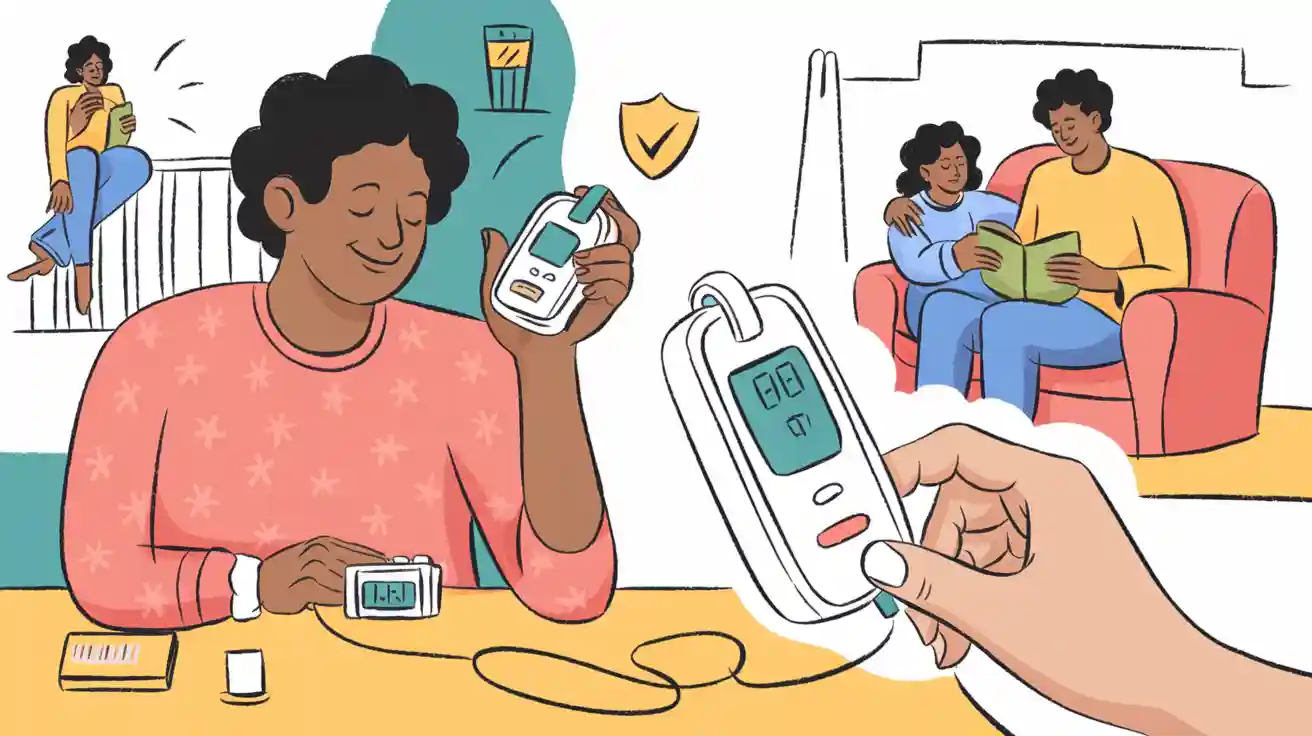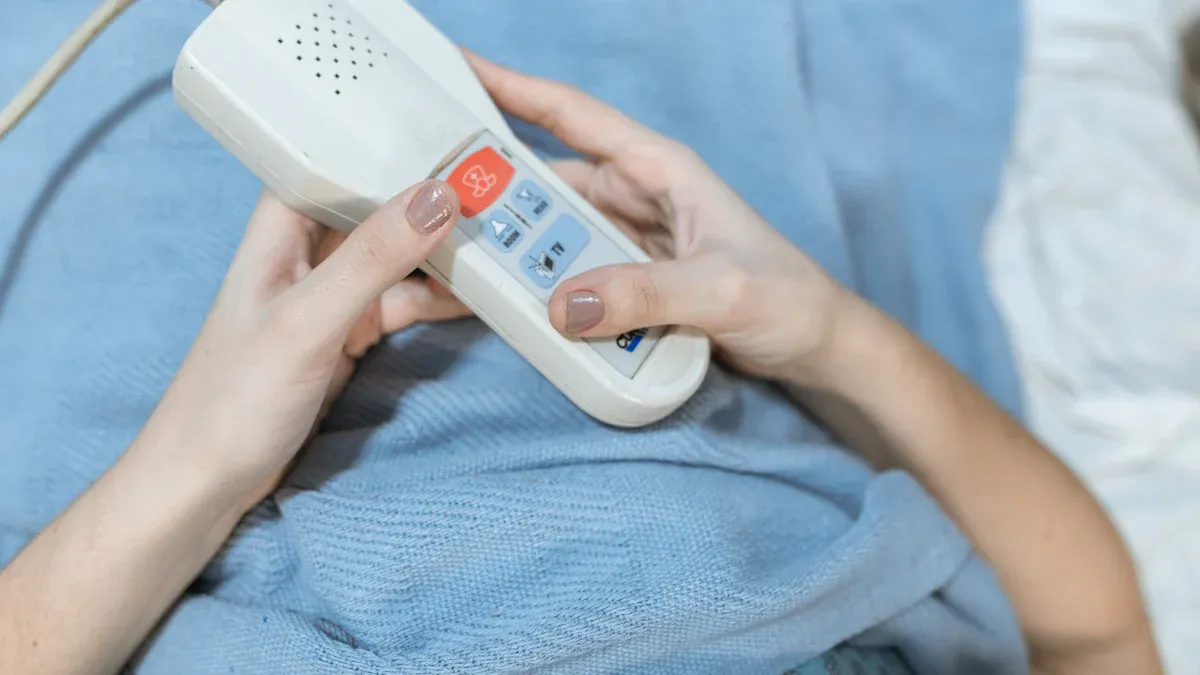
You rely on a Home Healthcare Device to deliver consistent care at home, but lithium battery packs bring unique risks. Incidents like thermal runaway can threaten safety, while poor usability may disrupt patient routines. You need effective risk management and thoughtful design strategies to ensure both protection and convenience.
Key Takeaways
Understand the risks of lithium battery packs, especially thermal runaway. Proper charging and storage practices can prevent hazards and ensure safety.
Prioritize usability in home medical devices. Intuitive designs and clear instructions reduce user errors, enhancing patient safety and device reliability.
Implement regular maintenance and monitoring of battery packs. Routine inspections and function tests help identify issues early, ensuring consistent performance and care.
Part 1: Safety Risks in Home Healthcare Devices
1.1 Thermal Runaway and Battery Hazards
You face significant risks when using lithium battery packs in home medical devices. Thermal runaway is a critical hazard. This phenomenon occurs when the battery’s temperature rises uncontrollably, often due to internal short circuits, overcharging, or physical damage. The result can be fire, toxic gas release, or even explosion.
Different lithium battery chemistries present varying levels of risk:
Chemistry Type | Energy Density (Wh/kg) | Cycle Life (cycles) | Thermal Stability | Typical Use Cases |
|---|---|---|---|---|
LCO (Lithium Cobalt Oxide) | 150-200 | 500-1,000 | Moderate | Consumer electronics, Medical |
NMC (Nickel Manganese Cobalt) | 150-220 | 1,000-2,000 | Moderate | Medical, Industrial, Robotics |
LiFePO4 (Lithium Iron Phosphate) | 90-160 | 2,000-4,000 | High | Medical, Infrastructure, Security |
LMO (Lithium Manganese Oxide) | 100-150 | 300-700 | Moderate | Power tools, Medical |
LTO (Lithium Titanate Oxide) | 70-80 | 5,000-7,000 | Very High | Medical, Industrial |
Solid-State Battery | 250-350 | 2,000+ | Very High | Medical, Consumer electronics |
Lithium Metal | 300-500 | 500-1,000 | Low | Next-gen Medical, Robotics |
Note: Solid-State Battery and LiFePO4 chemistries offer improved safety due to higher thermal stability.
You must understand that improper charging, exposure to high temperatures, or physical abuse can trigger these hazards. Home medical devices often operate in uncontrolled environments, increasing the risk of patient harm incidents. Device oversight becomes crucial to prevent catastrophic outcomes.
1.2 Risk Management Documentation
You need robust risk management documentation to ensure the safety of home medical devices. The IEC 60601 Series of Standards sets the benchmark for safety and performance in this sector. Compliance with these standards is essential, especially for devices used by vulnerable populations such as the elderly or those with chronic conditions.
The IEC 60601 standards require you to document all potential hazards, including those related to lithium battery packs.
You must assess and mitigate risks associated with thermal runaway, fire, and toxic gas emissions.
Manufacturers should implement best practices to achieve compliance, focusing on both device safety and user protection.
Tip: Always request documentation from your device supplier that demonstrates compliance with IEC 60601. This ensures your device meets international safety requirements.
1.3 Usability Challenges in Home Medical Devices
You encounter usability challenges that can directly impact patient safety. Poorly designed interfaces or unclear instructions often lead to user errors. Studies show that users make frequent mistakes with home medical devices. For example, users average 0.77 errors per session with blood pressure monitors and 0.99 errors with pulse oximeters. These errors can compromise device performance and patient outcomes.
Usability issues in battery-powered home medical devices often stem from complex controls or ambiguous alerts.
Incorrect usage increases the risk of device failure, which can result in missed treatments or inaccurate readings.
You must prioritize intuitive design and clear labeling to reduce the likelihood of user error.
Callout: Usability is not just about convenience. It is a critical factor in preventing patient harm and ensuring reliable device operation.
You should work closely with manufacturers to provide feedback on device usability. This collaboration helps drive improvements that benefit both patients and caregivers.
Part 2: Battery Safety in Home Healthcare

2.1 Charging and Storage Best Practices
You must prioritize safe charging and storage practices to maintain the reliability of lithium battery packs in intelligent home medical devices. Lithium-ion batteries deliver efficiency and longevity, but improper handling can compromise device performance and patient safety. You should always use chargers designed for your device to prevent compatibility issues and reduce the risk of overheating.
Use chargers recommended by the manufacturer for each device.
Maintain a stable charging environment. Avoid areas with extreme temperatures or high humidity.
Charge batteries partially, keeping them between 20% and 80% capacity. This extends battery life and supports real-time health monitoring.
Ensure good ventilation during charging. This prevents heat buildup and reduces fire risk.
Monitor charging frequency. Overcharging or frequent deep discharges shorten battery lifespan.
When storing lithium battery packs, you need to follow strict guidelines to prevent damage and extend operational life. Store batteries in a cool, dry place. Avoid exposure to extreme cold or heat. Use original packaging or protective cases to prevent short-circuiting. Charge or discharge batteries to about 50% capacity before storage. Check the battery every six months to maintain this charge level. If possible, store batteries separately from devices.
Tip: Proper charging and storage practices reduce the risk of thermal runaway and ensure your intelligent home medical devices remain ready for use.
2.2 Maintenance and Monitoring
You must implement regular maintenance and monitoring protocols for lithium battery packs in intelligent home medical devices. Routine inspections help you identify potential issues before they affect device operation. Assign a dedicated person to oversee battery maintenance for each device. This ensures accountability and consistency.
Maintenance Task | Frequency |
|---|---|
Inspect all battery cells | At least once a week |
Increase inspection frequency | If devices run multiple shifts |
Weekly function tests | Every week |
Monthly runtime tests | Every month |
You should conduct weekly function tests to verify that the inverter and batteries work properly. Monthly runtime tests confirm that the system provides the intended backup power duration. These steps support real-time health monitoring and reduce the risk of unexpected device failures.
Inspect battery terminals for corrosion or damage.
Check for swelling, leaks, or unusual odors.
Monitor battery voltage and temperature during operation.
Replace batteries that show signs of wear or reduced performance.
Alert: Regular maintenance ensures your intelligent home medical devices deliver reliable care and minimize downtime.
2.3 Battery Management Systems (BMS)
You need advanced battery management systems to optimize the safety and performance of lithium battery packs in intelligent home medical devices. A BMS learn more provides real-time health monitoring and controls critical parameters such as voltage, current, and temperature. This technology supports medical, robotics, security, infrastructure, consumer electronics, and industrial sectors.
Voltage and current control protects against overcharging and deep discharging.
Thermal management prevents overheating and reduces fire risk.
Fire protection features detect and respond to hazardous conditions.
Real-time monitoring of battery status enables proactive maintenance.
Dynamic adjustment of charging and power delivery parameters ensures optimal performance.
Battery temperature monitoring identifies unsafe operating conditions.
Proactive failure management suspends charging or adjusts voltage/current levels in extreme situations.
Improvement Type | Percentage Increase |
|---|---|
Battery Lifetime | 30% |
Total Cost of Ownership Reduction | >30% |
The implementation of BMS in intelligent home medical devices leads to enhanced patient safety, reliable performance, and extended operating times during emergencies. You benefit from reduced maintenance costs and improved device uptime. BMS technology ensures your device operates effectively, even during power outages, which is critical for home healthcare.
Note: Integrating BMS into your intelligent home medical devices is essential for maximizing safety, efficiency, and long-term reliability.
Part 3: Design for User Convenience

3.1 User-Friendly Device Interfaces
You need a device interface that supports seamless operation in diverse home and professional settings. User-friendly interfaces in battery-powered medical devices improve accessibility for patients and caregivers. Features such as enlarged buttons and clear instructions allow you to manage healthcare delivery efficiently, even if you have limited technical experience or mobility challenges. This ease of use increases adoption rates and supports timely treatments.
Design Feature | Description |
|---|---|
Intuitive Design | Seamless interaction in various home environments |
Portability | Easy to transport and use in multiple locations |
Robust Connectivity | Reliable communication with other devices |
You benefit from intuitive designs and seamless interaction, which reduce errors and enhance the reliability of healthcare delivery. These features are essential in medical, robotics, security, infrastructure, consumer electronics, and industrial sectors.
3.2 Alerts and Notifications
You rely on clear alerts and notifications to maintain safe operation of your medical device. Visual and audible signals warn you about battery status, charging needs, or potential faults. These notifications help you respond quickly, minimizing downtime and ensuring continuous healthcare delivery. You should select devices with customizable alert settings to match your workflow.
Tip: Choose a medical device with real-time battery alerts to prevent unexpected interruptions in healthcare delivery.
3.3 Modular Battery Packs
You gain flexibility and convenience from modular battery packs in lithium-powered medical devices. Modular designs allow you to replace or upgrade battery packs without specialized tools. This feature supports rapid maintenance and reduces device downtime. Standardized lithium chemistries such as LCO, NMC, LiFePO4, LMO, LTO, solid-state, and lithium metal batteries offer compatibility across medical, robotics, and industrial applications.
Modular battery packs simplify replacement and maintenance.
You can extend device runtime by swapping packs during long shifts.
Standardized packs support interoperability in healthcare delivery and other sectors.
Note: Modular battery packs enhance operational efficiency and support scalable healthcare delivery in home and professional environments.
Part 4: Regulatory Standards for Medical Devices
4.1 Compliance and Safety
You must ensure that every medical device used in home healthcare meets strict regulatory standards for battery safety and performance. These standards protect both patient safety and the quality of care. Regulatory bodies such as the FDA and international organizations recognize several key standards for lithium battery packs in medical applications.
Standard | Description |
|---|---|
Household and Commercial Batteries, recognized by the FDA for evaluating medical devices. | |
UL 1642 | Lithium Batteries (Cells), recognized for medical device safety. |
IEC 62133 | Safety requirements for secondary lithium cells and batteries. |
ISO 13485 | Quality management systems for medical device manufacturing. |
IEC 60601-1 | General safety and performance for medical electrical equipment. |
IEC 60601-1-11 | Safety and performance for medical devices in home healthcare environments. |
You should also consider biocompatibility, serialization, and traceability for each device. Authentication features help prevent counterfeiting, which is critical for patient safety. The IEC 60601-1-11 standard specifically addresses the unique risks of using medical devices in home settings, ensuring that lithium battery packs deliver reliable care outside clinical environments.
Note: Always verify that your device supplier provides documentation for compliance with these standards. This step reduces risk and supports consistent patient care.
4.2 Data Protection in Home Healthcare
You need to address data protection as a core part of medical device design. Regulations such as HIPAA in the United States and GDPR in Europe set strict requirements for managing patient data collected by battery-powered medical devices. These rules impact how you access, store, and share sensitive health information.
ANSI/AAMI ES 60601-1: General safety and performance for medical devices.
IEC 60086-4: Safety of lithium batteries in intended use.
IEC 62133: Safety for secondary lithium cells and batteries.
UN 38.3: Safe transportation of lithium batteries.
FDA regulations: Compliance with consensus standards for medical devices.
You must ensure that each device supports patient rights to data access and portability. Manufacturers have a responsibility to design devices that protect patient privacy and support secure data management. The EU Battery Regulation also applies to medical devices, emphasizing sustainability, ethical sourcing, and environmental responsibility. This regulation encourages the use of recycled materials and eco-design principles in lithium battery packs. For more on responsible sourcing, see conflict minerals.
Tip: Choose medical devices that comply with both safety and data protection standards. This approach ensures reliable care and builds trust with patients and providers.
You achieve the best results in chronic disease management when you balance safety and convenience in lithium battery packs. Ongoing education, such as hands-on training and clear manuals, supports proper device use. Regular maintenance doubles battery life and reduces risks. For tailored solutions, consult our custom battery solutions.
FAQ
What lithium battery chemistries are best for home healthcare device safety?
Chemistry | Cycle Life | Thermal Stability | Application Sectors |
|---|---|---|---|
LCO | 500-1,000 | Moderate | Medical, Consumer Electronics |
NMC | 1,000-2,000 | Moderate | Medical, Robotics |
LiFePO4 | 2,000-4,000 | High | Medical, Infrastructure |
LMO | 300-700 | Moderate | Security, Medical |
LTO | 5,000-7,000 | Very High | Industrial, Medical |
Solid-state | 2,000+ | Very High | Medical, Consumer Electronics |
Lithium metal | 500-1,000 | Low | Next-gen Medical, Robotics |
You should select LiFePO4 or solid-state for high thermal stability in home healthcare.
How does oversight improve home healthcare device reliability?
You gain reliability through regular oversight. Scheduled inspections, battery monitoring, and Large Power’s custom battery solution custom battery solution reduce risks and support uninterrupted home healthcare.
Why choose modular lithium battery packs for home care?
You streamline maintenance in home care with modular packs. Quick swaps minimize downtime. Standardized packs fit various home healthcare device models across medical, robotics, and security sectors.






